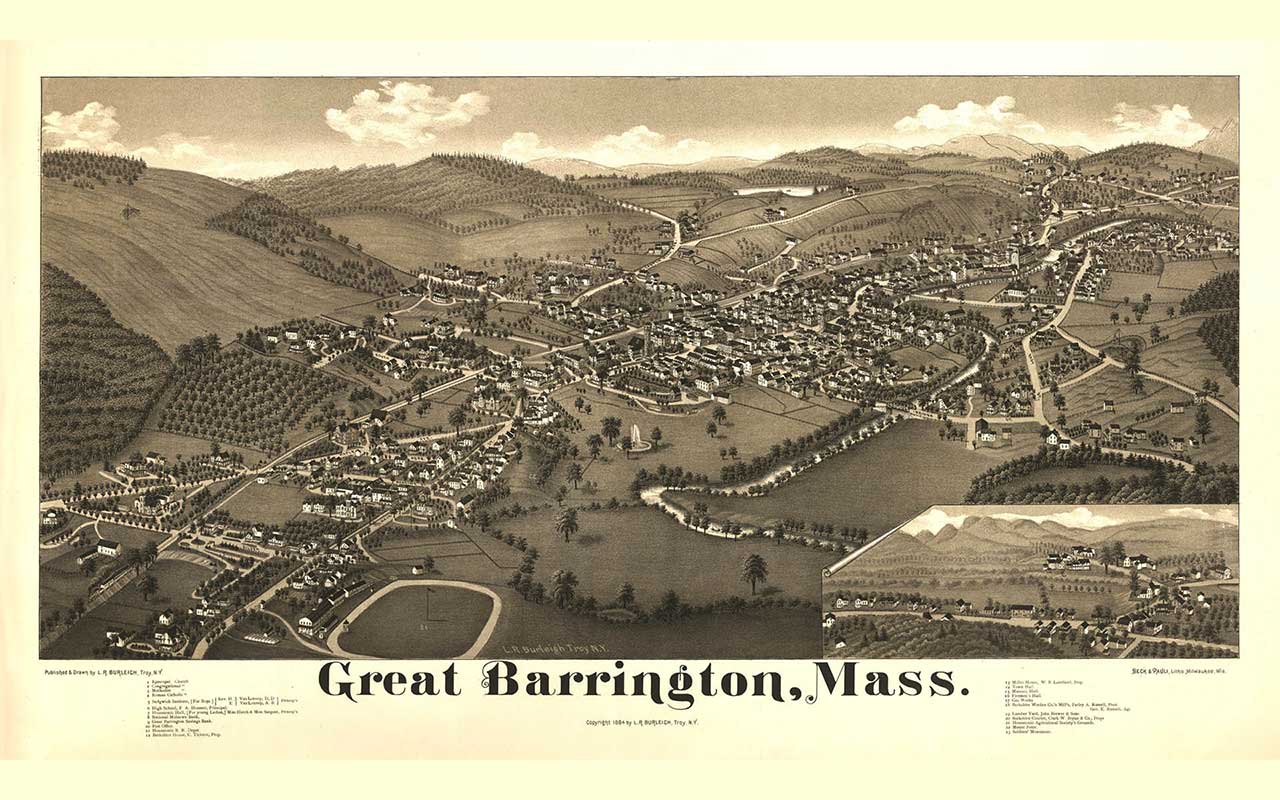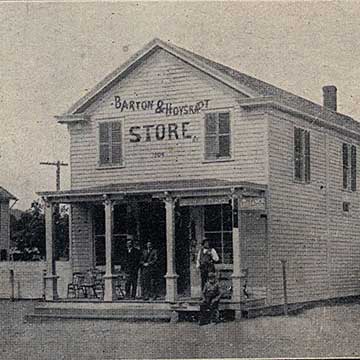Local History

The Name Game
For this special tenth anniversary issue, Main Street Magazine uncovered the interesting history behind some of our local towns and how they were granted their names – and this is just a tiny sampling!
As we go about our daily lives – going to work, shopping, attending cultural events, and gathering with friends – we often find ourselves in different towns that dot the Hudson Valley and beyond. From New York’s Red Hook, Rhinebeck, Hudson, Kingston, and Tivoli to the Berkshires in Massachusetts and Litchfield Hills in Connecticut, each town boasts its own vibe. From quaint and charming to urban and artsy, we’ve got it all.
While we’re day- or weekend-tripping throughout the Hudson Valley – moving from Point A to Point B – many of us probably don’t stop to think too much about the region’s rich history and how each town got its name. On a recent drive through Poughkeepsie, I decided to find out how the town got its name.
“History is not another name for the past, as many people imply. It is the name for stories about the past,” said A.J.P. Taylor – a British journalist, broadcaster, and historian who specialized in 19th- and 20th-century European diplomacy.
So, for Main Street’s special anniversary issue, we decided to dig up the region’s past to uncover the stories behind some names of local towns.
Ancram/Ancramdale, NY
According to the Roeliff Jansen Historical Society, Ancram, which was founded in 1803, was originally part of Gallatin. In 1814, Ancram separated from Gallatin and became an independent town. Its name was derived from the Livingston homestead in Anchoram, Scotland. Robert Livingston, first Lord of the Manor was the son of a Scottish clergyman, born in Anchoram, Scotland in 1654. The town comprises 27,000 of the total 160,000 acres the Livingston family had held from the initial grant by the English Crown in 1686. Philip Livingston, grandson of Robert, founded the first iron works in 1743, the only one of its kind on the banks of the Roeliff Jansen Kill and in the New York Colony.
 The Berkshires, MA
The Berkshires, MA
Bordered to the north by Vermont, to the west by New York, and to the south by Connecticut, the Berkshires in Massachusetts is a biologically diverse county dotted with lots of state forests and parks. When European settlers arrived in the 18th century, the Mohicans inhabited the area. In 1760, Berkshire County was created and named for Berkshire, England.
Clermont, NY
Former Town Historian Anne Poleschner shared some information about this town on Clermont’s official website. She said the town is named after the Livingstons’ Clermont estate. In 1788, Livingston Manor was organized as Clermont. Six other towns in Columbia County were also formed at this time.
Clermont (the home), which was built in 1730, is the oldest of the great estates of the Mid-Hudson Valley. Clermont was home to seven generations of the notable Livingston family of New York, who resided on the estate between 1730 and 1962. At one time, Clermont was a working farm and country retreat for the Livingston family.
Originally an estate of 13,000 acres, it was eventually separated from the Manor of Livingston in 1728. The Livingstons of Clermont later acquired over 500,000 acres of land in the Catskill Mountains and over 100,000 acres in Dutchess County.
During the American Revolution, Clermont marked the northernmost penetration by British troops up the Hudson River. In October 1777, the British burned Clermont as well as Kingston. In response, Chancellor Livingston donated some of his Catskill Mountain land to the people of the City of Kingston to help finance the rebuilding of the city.
Finally, Clermont was also home to Montgomery Livingston (1816-1855), a member of the Hudson River School of painting and a member of the National Academy of Design.
Copake, NY
According to the Roeliff Jansen Historical Society, Copake was part of the 1686 Taconic Grant to politician, Robert Livingston, which included 160,000 acres. The town of Copake was formed in 1824 by splitting from the town of Granger, which was renamed Taghkanic. The town derives its name from a lake, which was known to the natives as Cook-pake, or Ack-kook-peek, which meant “Snake Pond.” The largest body of water in the area is Copake Lake, which touches the western border of the town.
Ghent, NY
In 1818, the town of Ghent was founded from parts of the towns of Chatham, Claverack, and Kinderhook. It was named after the Treaty of Ghent. According to the National Archives in Washington, DC, the 1814 “Treaty of Peace and Amity Between the United States and Great Britain” was signed on December 24, 1814. It ended the War of 1812, fought between Great Britain and the United States.
Hudson, NY
The little city of Hudson has the distinction of being the first city in America to be incorporated after the 13 colonies became the US. It was named after British explorer and navigator, Henry Hudson, best known for his exploration of the Hudson River and Hudson’s Bay, Canada in 1609. When he arrived in the region on a mission to find a northwest passage to Asia, Hudson arrived in present-day New York Harbor and sailed up to the area that is now Hudson.
Great Barrington, MA
According to the Great Barrington Historical Society & Museum, Great Barrington is named after a woman who supported the colonies. While one of the team members at Great Barrington Town Museum was conducting research for an exhibit, he found the banner of the Great Barrington town seal in a storage closet. It featured the words Honesta Quam Splendida, which are Latin for “Honor Before Splendor.” According to the Historical Society & Museum’s website, “The seal was that of John Shute (1678-1734), a member of the English Parliament raised by the King in 1720 to the Irish peerage as both Baron Barrington of Newcastle in the County of Limerick, and First Viscount Barrington of Ardglass in the County of Down.”
According to The History of Great Barrington, which was written by Charles Taylor, Governor Sir Frances Bernard was tasked with naming towns in the western part of the colony. He chose to honor his wife’s cousin, Lord Barrington, who was known to have a special interest in the colonies.
Kingston, NY
The City of Kingston’s history dates back to the arrival of the Dutch in 1652. A vibrant city with rich history and architecture, Kingston was named the state’s first capital in 1777 until it was burned by the British several months later.
The City of Kingston’s official website traces the area’s history way back to when Kingston was on an ocean floor that created the limestone that Dutch settlers would use 70 million years later to build their homes. According to the site, “The Kingston history we usually think of begins with the Dutch, who created the third settlement in the Dutch colony (after Manhattan and Fort Orange, later Albany). After some serious trouble with the earlier inhabitants, Native Americans of the Esopus tribe, the settlement got down to a hundred years or so of serious farming, which eventually led to some trouble with the British. In the early 19th century, Kingston changed from a regional farm town to a new transportation center and gradually became a hub of industry, particularly of natural resources that could be used to build cities (cement, bricks, and bluestone). A neighboring village, Rondout, developed a mile away and eventually merged with Kingston.”
Kent, CT
According to Connecticut Tourism Office’s CTvisit, the town was established and incorporated in 1739. Its name hails from Kent, England. According to the Kent Historical Society, “On the first Tuesday of March 1737, at one o’clock in the afternoon, an area of land on the eastern bank of the Housatonic River was auctioned off at the Colony courthouse in Windham, CT. The area was divided into ten sections of fifty-three shares each, fifty of which were sold, while three were set aside for a school, church, and minister’s lot. Within a year, the first settlers of Kent established themselves on their newly acquired plots. The other sections, or divisions, were auctioned off in sequence over the next thirty-five years, and promptly settled. The town remains rural and small to this day.”
Millerton, NY
Millerton was named after civil engineer Sidney Miller – a railroad builder who was largely responsible for the railroad’s debut in the area. After the arrival of the railways, Millerton prospered as a commercial center. Millerton’s town website states that Millerton was founded in 1851 and became a center for commerce and culture when the three railroads met there at some point in the mid-19th century. Much of that era’s architecture was preserved and Millerton was added to the National Register of Historic Places in 2010.
Red Hook, NY
According to the Town of Red Hook’s official website, prior to the European settlement of the Kingston region in the 1650s, the Red Hook area was inhabited by the Esopus and Sepasco Indians. While charting the river, early Dutch navigators came upon Cruger’s Island (a peninsula or “hoek”) during early autumn when it was red with sumac and Virginia creeper. This is what led to its naming, “Red Hoek.”
Rhinebeck, NY
Back around 1686, Dutch families settled the land in what is now regarded as Rhinebeck. “Its citizens have contributed to the historical wealth of the nation, farming the land, developing the fabric of the community and playing integral roles in wars from the Revolutionary to those of the 20th century,” according to the Museum of Rhinebeck History.
Via a royal grant, Henry Beekman, a prominent colonial American politician and landowner, owned most of the present town of Rhinebeck. Around 1714, Palatine German families settled in this region. Their community, centered around a log church a mile south of the present-day stone edifice, came to be known as “Rynbeck.”
Business was conducted here until the early 19th century. Its importance diminished as growth and commerce in “The Flatts” – a village three miles to the south – eventually overshadowed this early settlement. The incorporation of the Village of Rhinebeck took effect in 1834.
Tivoli, NY
In the 1790s, Upper Red Hook became Tivoli. Red Hook’s official website cites that Tivoli took its name from a neighboring mansion. That home’s name was inspired by the gardens at Tivoli, which were located near Rome, Italy. Initially the name “Tivoli” was applied only to the hamlet, which clustered around the landing – the community on the heights was known previously as Myersville, Mechanicville, and Madalin.
As you journey about the area, enjoying the restaurants, shops, museums, and vistas, take some time to reflect on the region’s past. Feel free to share this history with your fellow day- or weekend-trippers. •

